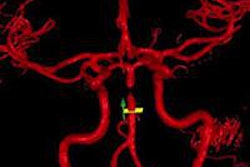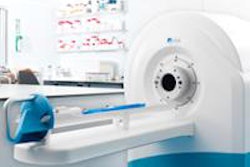Researchers have unveiled a new MRI-guided catheter that could help physicians assess brain tissue in real-time in stroke patients.
The findings were presented on July 29 at the Society of NeuroInterventional Surgery (SNIS) annual meeting.
The magnetically assisted, remote-controlled catheter (MARC) could advance the field of neurointervention, a specialty that facilitates stroke treatment by navigating a catheter through blood vessels from a point of entry in the groin to the targeted area in the brain, according to SNIS.
The researchers sought to determine if the remote-controlled catheter under MRI guidance could more effectively maneuver through complex vessel anatomy, which would ultimately allow improved visualization of the brain tissue affected during a stroke.
To assess its performance, lead author Dr. Steven Hetts, from the University of California, San Francisco, and colleagues compared a MARC prototype under MRI guidance with a manually navigated catheter under both MRI and conventional x-ray guidance. MRI-guided procedures were performed at 1.5 tesla using a balanced steady-state free precession sequence.
MARC was clearly visible under MRI guidance and was used to successfully complete 192 (80%) of 240 total turns around blood vessels, the researchers found. The manually directed catheter under MRI and x-ray guidance successfully completed 144 (60%) of 240 total turns and 119 (74%) of 160 total turns, respectively.
MARC was also faster, with a mean procedure time of 37 seconds per turn, compared with 55 seconds for the manually directed catheter under MRI guidance. The two methods were comparable when the manually directed catheter was used with x-ray guidance (44 seconds per turn).
The faster speed and increased accuracy of MARC could provide a more effective approach than the current standards for stroke treatment, Hetts said.



.fFmgij6Hin.png?auto=compress%2Cformat&fit=crop&h=100&q=70&w=100)




.fFmgij6Hin.png?auto=compress%2Cformat&fit=crop&h=167&q=70&w=250)











